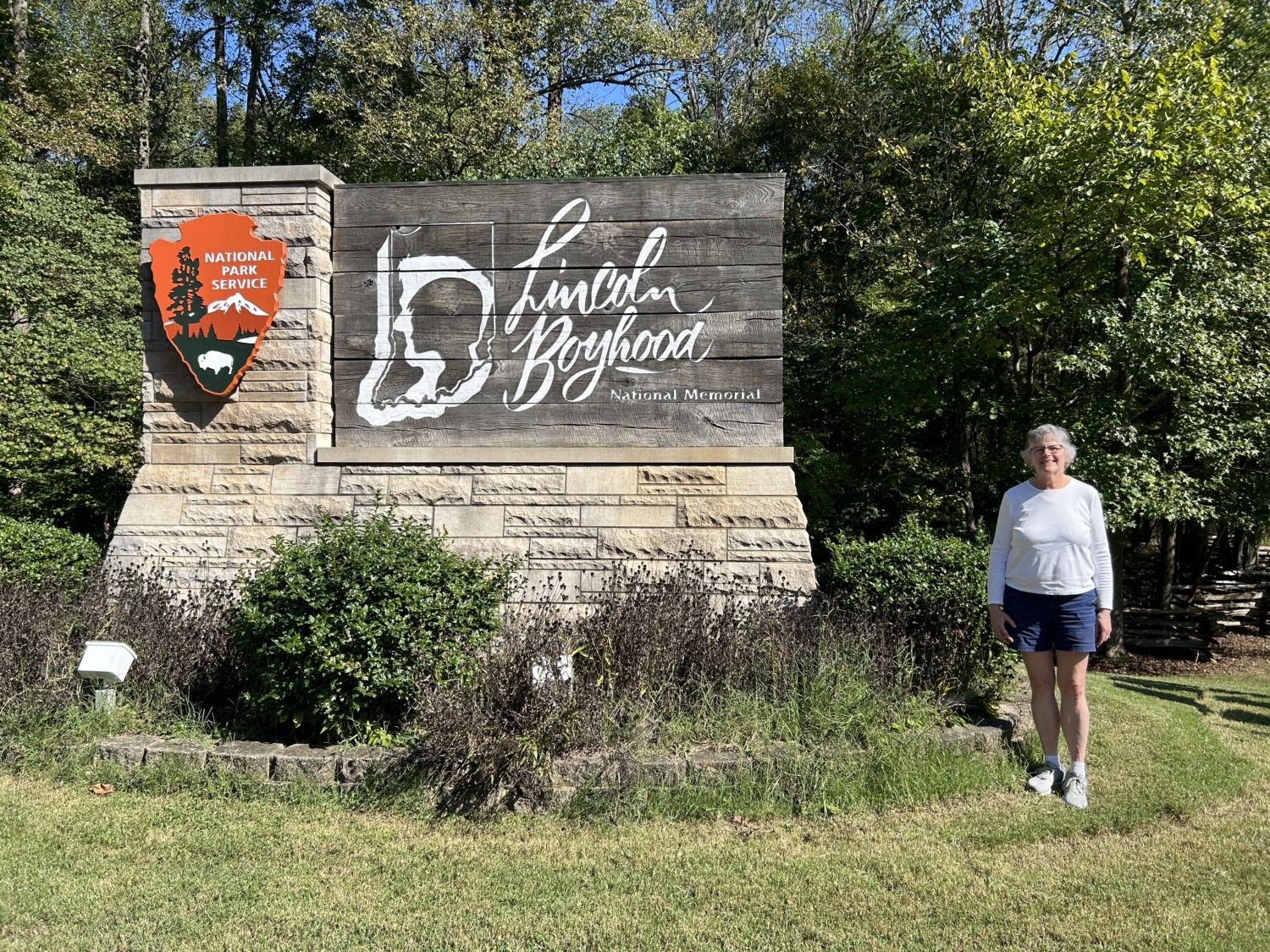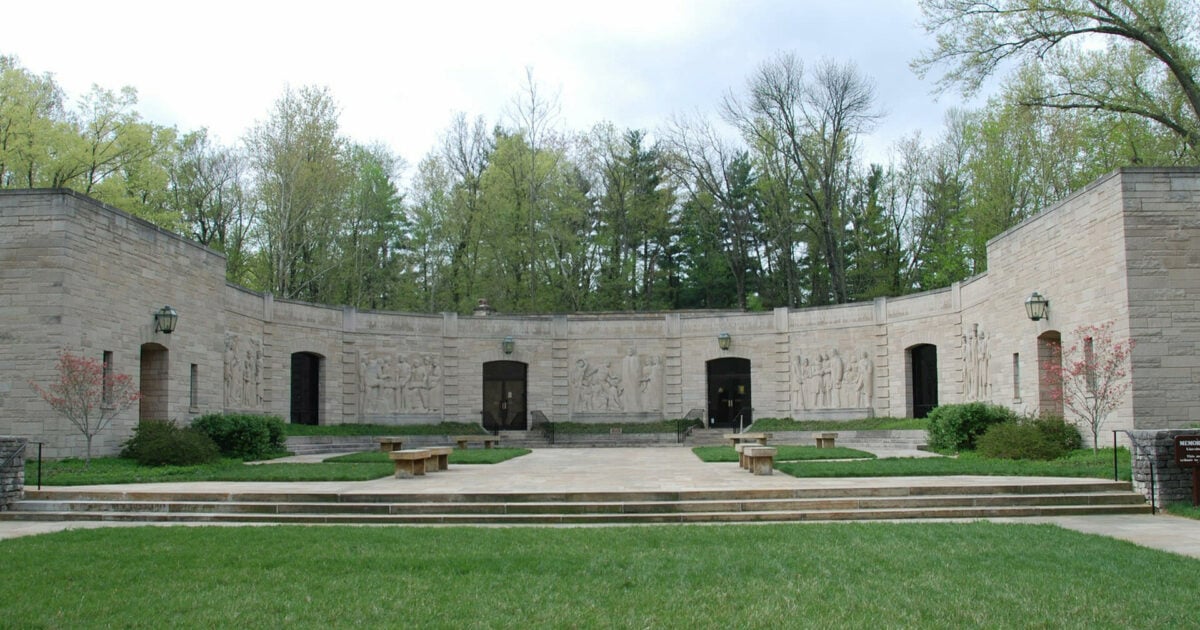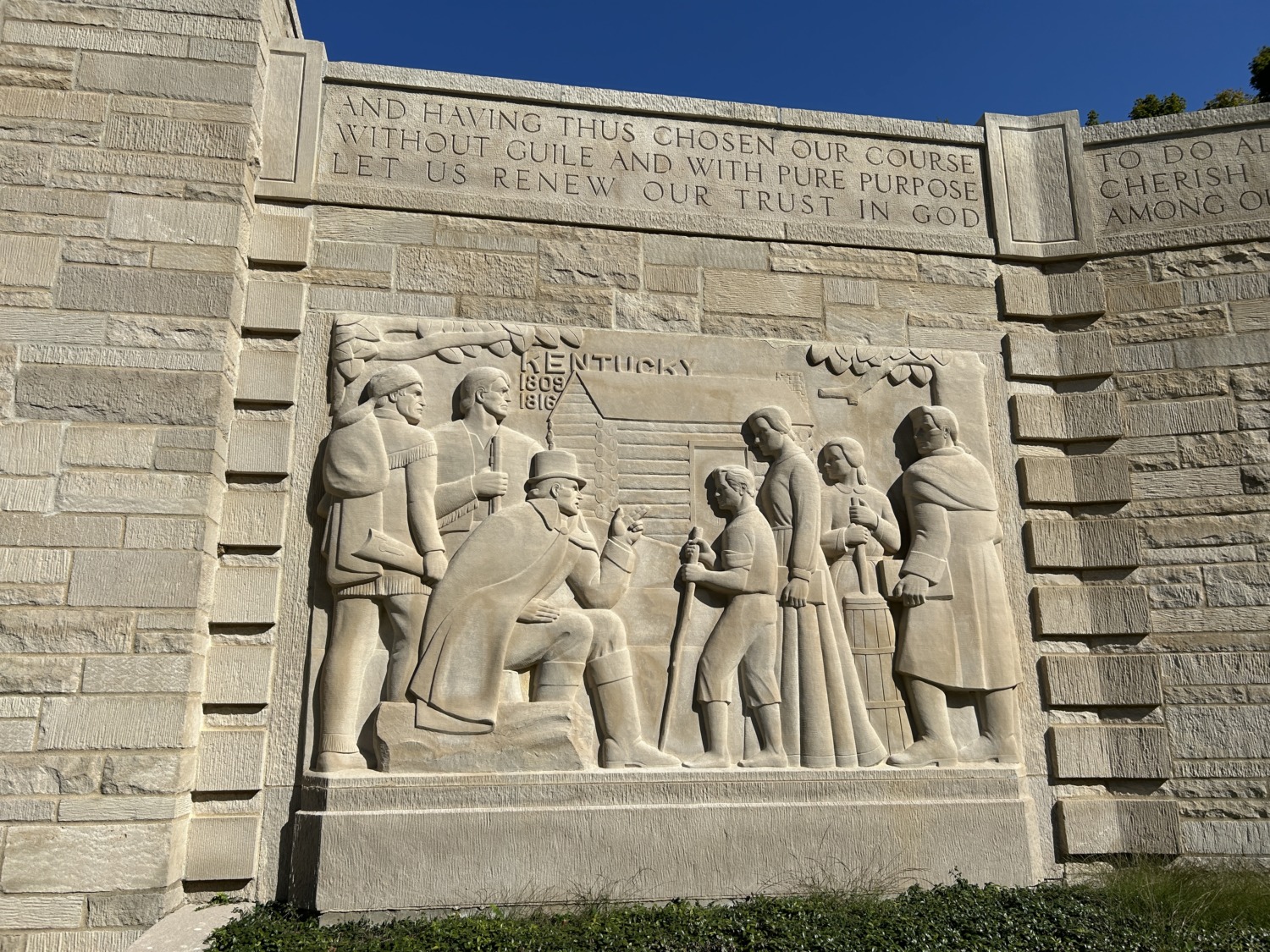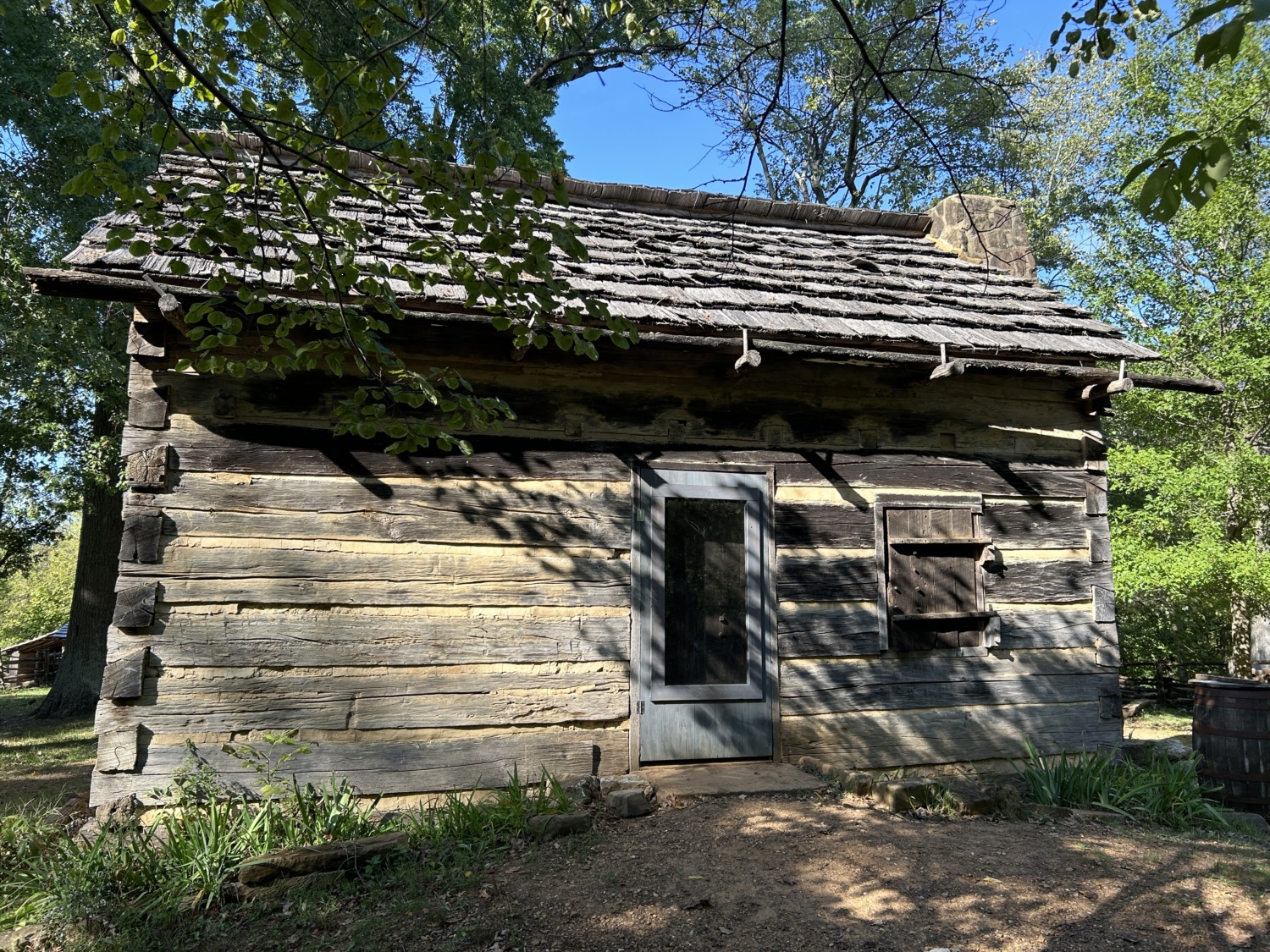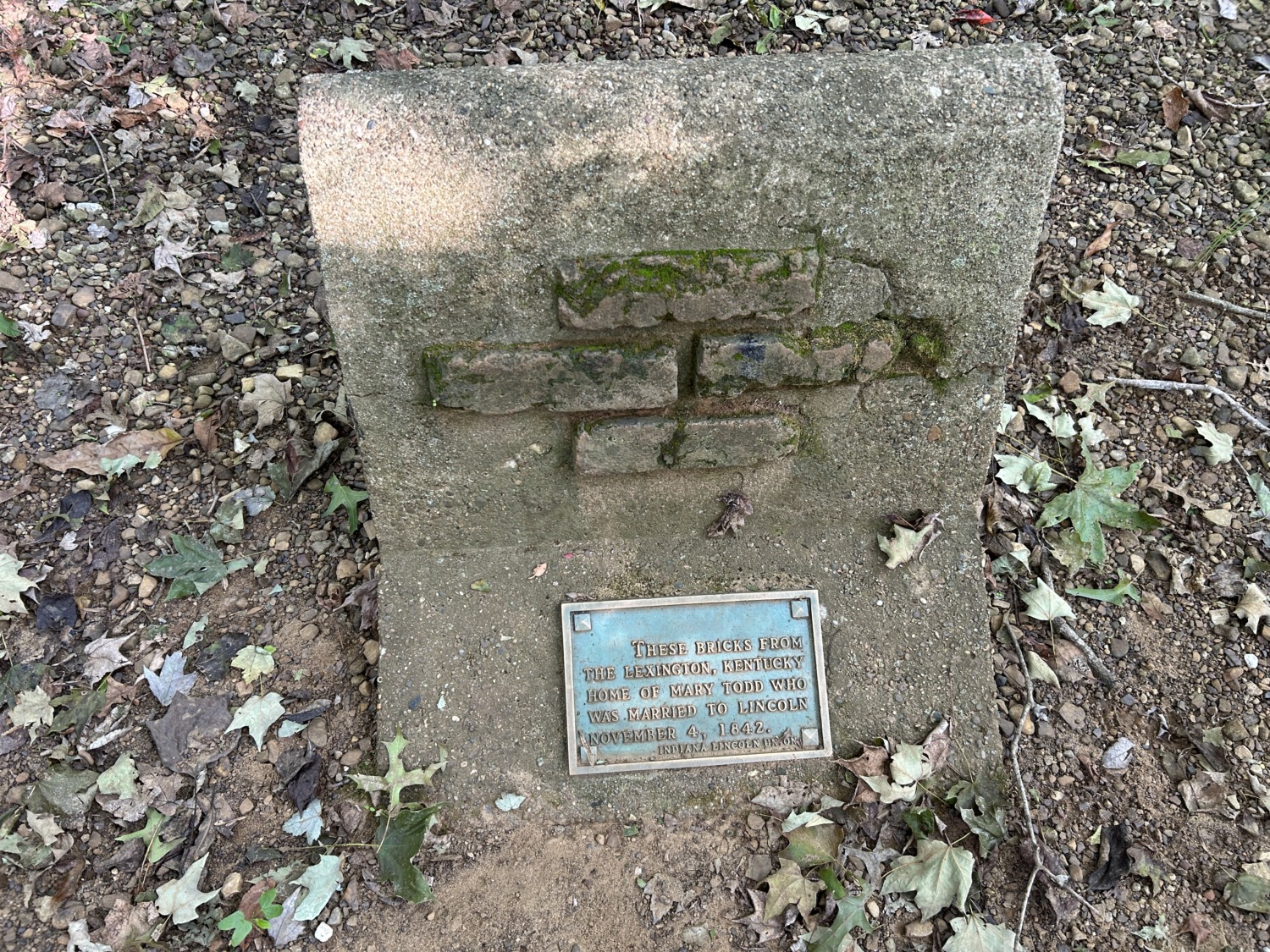The last national park site we visited on this trip was Lincoln Boyhood National Memorial in Lincoln City, Indiana. Abraham Lincoln lived on this farm along Pigeon Creek from the time he was 7, in 1816, until 1830 when the family moved to Illinois. The years at the homestead along Pigeon Creek were instrumental in shaping the man who would be the 16th President of the United States.
Lincoln Boyhood National Memorial is an interesting mix of information about Abraham Lincoln. The main building is a very impressive memorial with carved scenes from Lincoln’s boyhood on the outside of the building. Inside is an extensive museum that tells the story of Abraham’s childhood. There is also a movie theater that depicts his childhood on the homestead.
The extensive grounds outside the memorial building have several miles of trails, a graveyard where Nancy Hanks Lincoln was buried in 1818, and a living history farm modeled on the Lincoln homestead. There is also a cabin site memorial where the Lincoln home was. Tom and I talked to the ranger because we were very interested in working as volunteers at the living history farm. Although they have an RV site, it does not have full hook-ups, so we were a little disappointed.
The museum was very interesting. Tom and I were especially interested in the display on Milk Sickness, a disease that killed almost half of all the settlers in Dubois County, Indiana during the early 1800’s. Milk Sickness is what killed Nancy Hanks Lincoln in 1818. White snakeroot, a shade-loving plant that grows in the Ohio River Valley area, contains tremetol which is poisonous to animals and the humans who consume milk products or meat from those animals.
After our visit to the museum, Tom and I walked every mile of the trails in the park. We started at the giant flagpole and saw the pioneer cemetery. We explored the living history farm and talked about possibilities for interpretation. The boyhood nature trail was a nice walk through the woods with an overlook of the few houses in Lincoln City. Our final trail was the Trail of Twelve Stones, which were stones brought from places important to the life of Abraham Lincoln. The stones were very interesting. One was from his birthplace in Kentucky. One from Ford’s Theater in DC. One from Mary Todd Lincoln’s home. We enjoyed reading about the different stones and the effort it took to gather them.
I would like to volunteer at Lincoln Boyhood National Memorial. It would be an interesting story to tell and the buildings are all set up and ready to go. The area also had lots of inviting places to explore. But I also like my luxuries when I am volunteering, such as water and sewer. If they get full hookups to the RV site, Tom and I might end up going back.

